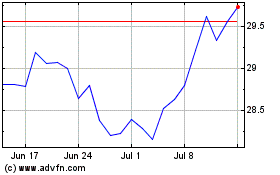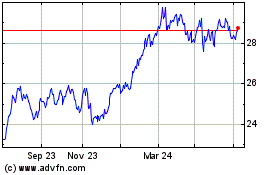By Timothy Puko
Oil sold off dramatically all of Tuesday afternoon as warnings
of oversupply and tumbling stock markets around the world highlight
the worst-case possibilities for a struggling market.
Despite 20 months of an oil market collapse dragging down prices
more than 70%, stockpiles are still growing even more than
expected. Refiners aren't consuming as much crude as hoped. And
fears of a global economic slowdown are weighing on the market,
damaging hopes that long-term demand increases could help end oil's
fall.
On Tuesday, the U.S. Energy Information Administration forecast
rising inventories this year and cut its price forecasts, taking
global oil down 6.5% from last month's prediction. Analysts said
upcoming government data is likely to show record high U.S.
stockpiles grew again last week. And oil prices for futures about a
year out fell harder than shorter-term futures--more in one day
than they had the entire month before--a sign some big sellers may
be realizing oil's recovery will take even longer than
expected.
Few things changed on Tuesday to accelerate a selloff, traders
and brokers said. But now that last month's speculation about
global exporters has ended with no sign of such a deal, people are
focusing on unrelenting signs from all around the world that a glut
is getting worse instead of getting better.
"You're seeing a lot of fear," said James Koutoulas, chief
executive at Typhon Capital Management, which manages about $100
million in assets. "Oil will end up going lower before a sustained
recovery."
Light, sweet crude for March delivery settled down $1.75, or
5.9%, at $27.94 a barrel on the New York Mercantile Exchange. It
has posted six losing sessions out of the last seven, sinking
nearly 16% in that span.
Brent, the global benchmark, fell $2.56, or 7.8%, to $30.32 a
barrel on ICE Futures Europe. It has lost 13% during a four-session
losing streak, its biggest percentage losses in four sessions since
the financial crisis.
In its monthly market report, the International Energy Agency
said crude oil prices are likely to fall even further as the
world's vast oversupply of petroleum only got worse in January,
with a surge in production from OPEC. Commercial oil stockpiles
rose to more than three billion barrels in December and are likely
to keep building in the first quarter, a time of year when
stockpiles usually shrink, the IEA said.
The IEA said there also are ominous signs for oil consumption
this year, with "risks to growth in Brazil, Russia and, of course,
slower growth in China." The IEA said it sees no reason yet to
change its demand-growth outlook of 1.2% for the year, calling it a
"very respectable rate," but adding that "economic headwinds
suggest that any change will likely be downward."
An official at the Kuwait Petroleum Corp. also said Tuesday that
Kuwait plans to increase its crude production by 150,000 barrels a
day by the third quarter of the year. It is the latest member of
the Organization of the Petroleum Exporting Countries to shrug off
calls to cut production to support prices, and to instead plan to
produce more to court customers. Iran leads the group, pledging to
increase production by a million barrels a day this year now that
economic sanctions have ended.
All of this production is likely to keep global inventories
growing by 1.4 million barrels a day in the first quarter, keeping
Brent prices below $40 a barrel through August, U.S. government
analysts at the EIA said. Its forecast for Brent in 2016 is now
$37.52 a barrel, down from $40.15 a month ago. U.S. oil is likely
to average $37.59 this year, down from the $38.54 the agency
forecast last month.
Stock markets around the world also retreated Tuesday, another
sign investors around the world are fretting about a slowing global
economy. Japan's Nikkei led the way down, losing more than 5%,
European markets lost 1% to 2%, and U.S. markets also suffered
losses before a late rebound. Much of the concern is about the
health of oil producers because a slate of bankruptcies could crash
many of the banks that lent them money, spreading pain across the
economy, Mr. Koutoulas said.
An official at the Kuwait Petroleum Corp. also said Tuesday that
Kuwait plans to increase its crude production by 150,000 barrels a
day by the third quarter of the year. It is the latest member of
the Organization of the Petroleum Exporting Countries to shrug off
calls to cut production to support prices, and to instead plan to
produce more to court customers. Iran leads the group, pledging to
increase production by a million barrels a day this year now that
economic sanctions have ended.
Many traders have tried to pick a bottom in the market, most
recently buying at $30 a barrel and causing oil to rebound from
that key marker near a 12-year low, brokers said. But as deals on
output cuts fail to materialize, supply keeps rising in many places
around the world and more analysts keep calling for oil to fall
below $20 a barrel, that speculative trade loses its justification,
brokers said.
"From all angles right now, there's just no reason to buy," said
Ric Navy, senior vice president for energy futures at brokerage
R.J. O'Brien & Associates LLC.
Oil demand had hit a five-year high in the third quarter of
2015, said Keisuke Sadamori, director of energy markets and
security at the International Energy Agency, who was speaking at
the meeting. But demand was underpinned by oil products, such as
gasoline, and demand in these markets is expected to slow this
year, which means support in the crude oil market could be limited,
he said.
Just last week, U.S. crude stockpiles likely increased another
3.7 million barrels, according to analysts surveyed by The Wall
Street Journal. The analysts also expect refinery work to slow by
0.3%, and gasoline stockpiles to build by 1 million, though
distillate supplies, including diesel, are likely to decline by
900,000 barrels.
The American Petroleum Institute reported late Tuesday a 2.4
million-barrel increase in U.S. crude supplies in the week ended
Feb. 5, according to a market participant. It also reported a 3.1
million-barrel increase in gasoline stocks and a 1.7 million-barrel
increase in distillate inventories, the market participant
said.
The EIA issues its official inventory numbers on Wednesday, a
widely watched measure of supply and demand.
Declining spreads are likely hurting refiners that make such
products as gasoline and diesel, encouraging them to slow their
work and start on overdue maintenance on their plants, said Jim
Ritterbusch, president of energy-advisory firm Ritterbusch &
Associates. Shares of several refinery companies have sold off in
recent days as investors expect their recent run of big profits to
end. As they slow down, it can only hurt demand for oil, analysts
said.
"There are no bullish triggers to point to until we get out of
refinery-maintenance season," said Michael Tran, commodity
strategist at RBC Capital Markets.
Gasoline futures settled down 5.72 cents, or 6%, at 89.89 cents
a gallon. Diesel futures fell 7.15 cents, or 6.8%, to 97.49 cents a
gallon.
Benoît Faucon and Summer Said contributed to this article.
Write to Timothy Puko at tim.puko@wsj.com
(END) Dow Jones Newswires
February 09, 2016 17:11 ET (22:11 GMT)
Copyright (c) 2016 Dow Jones & Company, Inc.
Australia And New Zealan... (ASX:ANZ)
Historical Stock Chart
From Mar 2024 to Apr 2024

Australia And New Zealan... (ASX:ANZ)
Historical Stock Chart
From Apr 2023 to Apr 2024
